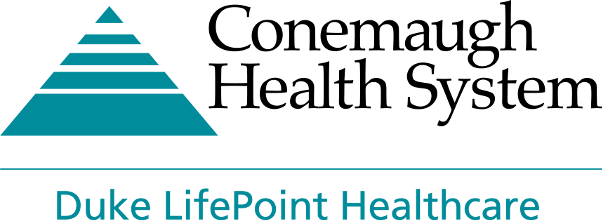'Revascularization' procedures crucial for restoring heart health
February 10, 2025

National “Heart Month,” celebrated each February, is about much more than the precious organ beating within the left side of our chest. It’s also about the care of an extraordinarily complex network of arteries and veins that convey life-giving blood throughout our bodies.
Herbert Wilt, 75, knows all about that.
A longtime sufferer of diabetes and Thoracic Aortic Disease, poor blood flow necessitated the amputation of Herbert’s big toe and parts of several other toes on his left foot. After angioplasty and stent procedures began to fail the Altoona resident, his physicians referred him to Conemaugh Health System’s Vascular Surgery team comprising Dr. George DeKornfeld and nurse practitioner Nadine Zatsick.
“Circulation in my left leg was so bad it was always ice cold. For years, when doctors used ultrasound to listen to my blood flow, they could barely hear anything,” Herbert said. “So, I was thrilled to become a patient at Conemaugh.”
After a checkup last March with Dr. DeKornfeld, Herbert was immediately admitted into Conemaugh Memorial Medical Center. He had marked tissue loss and drainage on parts of his left foot.
The next day, Dr. DeKornfeld performed a bypass to increase blood flow to that foot.
“The operation took 12 hours. I really gave him a workout,” Herbert said with a smile. “He took an artery from the back side of my calf and moved it to the front to increase blood flow. He closed me up with over a hundred staples in my leg, but I never felt pain. None.”
Herbert was in Conemaugh’s Intensive Care Unit for four days and in the hospital for three weeks.
“Dr. DeKornfeld came to see me every single morning. He’s so good-natured and has good, old-fashioned bedside manners,” Herbert said. “I feel great these days. That guy is fantastic.
“Now, when they use ultrasound to listen to my blood flow, it sounds like an old steam engine coming down the track,” he said with a wide grin. “In fact, I’m looking forward to getting my other leg done.”
Herbert was a prime case of “revascularization,” according to nurse practitioner Zatsick.
“Revascularization is anything we can do to the artery to improve the blood supply,” she said. “Stenting (inserting a short tube to open an artery), balloon angioplasty (using a balloon to unblock an artery) and artery bypassing are just a few examples.”
According to Dr. DeKornfeld, “Early evaluation for peripheral vascular disease – especially in diabetes – is super important. And that’s a message that we’re constantly reminding PCPs (primary care physicians) about.
“By making early evaluations, we take action to resolve blood-flow issues, infections and prevent amputations. Herbert is a prime example of that and a great success story.”
For more information about vascular services at Conemaugh Memorial Medical Center, visit www.Conemaugh.org.
Pictured Above: Dr. George DeKornfeld and Herbert Wilt
